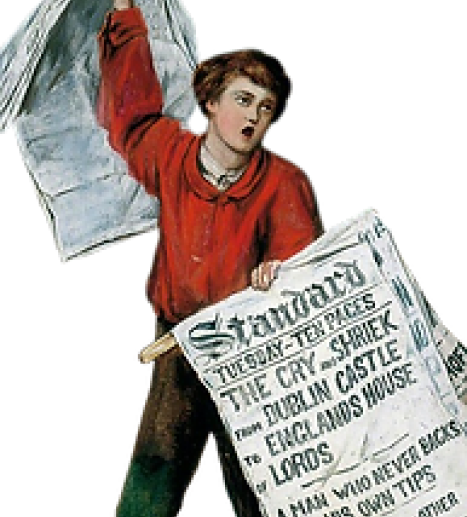An unlikely group is gathered at the entrance of the Victoria underground station: three clean-shaven men in corporate outfits, a mother leaning on her baby’s stroller, and four teenage girls sipping on Blank Street matcha. The unconventional cluster anxiously checks their phones, letting out a collective, frustrated sigh.
What could they possibly have in common on an ordinary Monday morning? They were all reading the London Underground disruption notice board.
As temperatures begin to drop, the frequency of public transport disruptions has risen. Last month, Londoners faced one of the most chaotic stretches of public transport delays in recent memory.
On September 1st, according to the BBC, a faulty Jubilee line train broke down between Westminster and Waterloo stations, trapping passengers on board for almost three hours in “hot and completely packed” carriages during the evening peak hours. Only a week later, strikes on the Tube and DLR severley hindered local transportation between September 7th and September 12th, with little to no service from September 8-11. Most recently, several major lines — including the District, Metropolitan, Elizabeth, and Piccadilly — faced part closures and reduced service over the weekend of October 17–19
While tube service has seemingly returned to normal, growing public dissatisfaction with the underground remains.
Since lockdown was lifted in 2021, public criticism of the once beloved transit system has risen, extending beyond just the frustrations with industrial action. Complaints have ranged fromconcerning noise levels to worsening temperatures and increasingly frequent delays, according to investigation findings by the BBC and the Independent. Earlier this summer, Liverpool Street station was flooded after heavy rain, causing congestion underground and confusion for commuters as Metropolitan line trains had to skip the station entirely. Some lines, like the Central line, are experiencing their highest rates of train breakdowns in 30 years.
So how have these grievances shaped perceptions of London’s transport system? This is particularly relevant for young Londoners, whose financial limitations and growing awareness of air pollution make car ownership increasingly unfeasible.
Isra Albaghdady, 23, an interior and exterior-branded space design student at London’s University of Arts, is frustrated by the lack of progress made in addressing the Underground’s issues. She says, “Nothing is changing. They’re striking every few months. It’s been almost three years, and we haven’t seen progress.” The summer of 2022 marked a wave of industrial actionacross the public sector in the UK, with sentiments lingering well into 2025. A TfL spkoesperson has noted that, excluding the September 2025 strikes, there hasn’t been a Tube strike since early 2023 but declined further comment.
“TfL has become a lot less efficient but I don’t have much of an option. Are we all gonna go on lime bikes?” she sarcastically remarks.
Although Albaghdady teasingly suggested e-bikes as an alternative to the tube, that’s exactly what some Londoners have turned to.
The latest annual TfL Strategic Analysis report indicates that, cycling has surged to record levels as a preferred mode of transport since 2021 – the highest increase recorded since data collection began in 2010.
Liam Bramley, 26, is a transport engineer at Project Centre – an engineering and landscape architecture consultancy in London. Project Centre has designed award-winning safe cycle and pedestrian improvement schemes, helping local councils and highway construction companies create sustainable, liveable neighbourhoods. He says he’s noticed “a great push for active transport options like walking and cycling,” in his workplace.
He adds: “Active transport is more sustainable for cities with this level of urban density because it produces less emissions.” Although Bramley doesn’t own a bicycle, he subscribes to Forest Plus, which allows him to hire unlimited Forest e-bikes for £40 a month. While it’s a significant expense, he explains that, compared to daily public transport fares—and with the added convenience of not worrying about bike theft or finding parking—it “turned out to actually be a bit more economical” in the long run, especially with the rising cost of living.
For others, such as Beks Lockie, the cost-effectiveness of cycling became a reality through the government’s Cycle to Work scheme. The 31-year-old lawyer and content creator saved 25% on her VanMoof e-bike through the program, by paying nothing upfront and having tax-efficient payments deducted from her salary by her employer.
Lockie, a passionate advocate for cycling, has turned her experiences into a resource for others looking to take up cycling in London. Her TikTok series ‘London Guides’ gives beginner-friendly cycling routes and tips and has amassed half a million views.
She says: “I noticed a lot of my friends and followers are scared to bike in the city, so it’s been nice to find some beautiful bike routes that are low in traffic that people can start out with. Lime Bikes have made cycling much more accessible, so they just need motivation.”
Mahmoud Raed, a third-year business engineering student at City St. George’s, is an avid Lime Bike user. As an international student, he initially relied on TfL public transport, especially the tube. However, he made the switch to e-bikes, citing the stress over navigating strikes and delays as huge deterrers from the Underground.
“Something always went wrong…I used to feel like I was always late for everything,” says Raed. “Now, any time I can hop on a bike, I know I’m going to be in complete control of my time.”
However, the viability of e-biking is heavily dependent on location, the length of the journey and even weather conditions.
Lockie leaves her beloved bike behind for her once-weekly commute to avoid an hour-long ride. Similarly, Albaghdady, based near Wembley Park in West London, would need 90 minutes to travel to university if she cycled, and would be forced to ride on busy streets that don’t have separate cycling lanes, which makes cycling an unfavourable mode of transport for her.
Bramley believes “when you get over a certain threshold of traffic, it’s important to have separate facilities for less confident cyclists,” to encourage safe active travel.
Raed agrees that more cycling infrastructure is needed. He’s comfortable driving alongside cars in central London but says the practice “raises safety concerns, especially during windy, rainy days or on faster roads.”





















